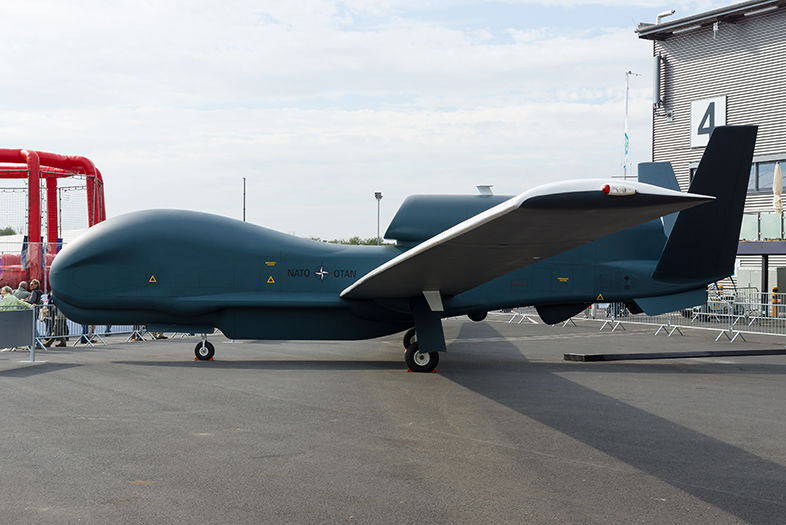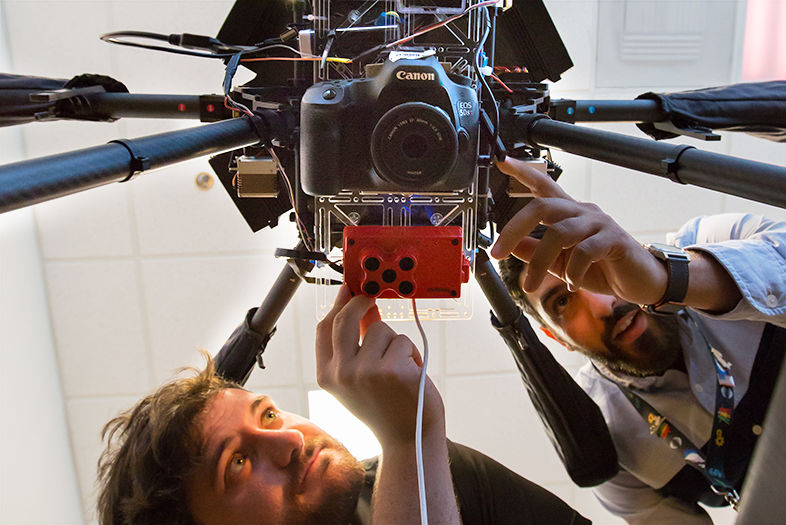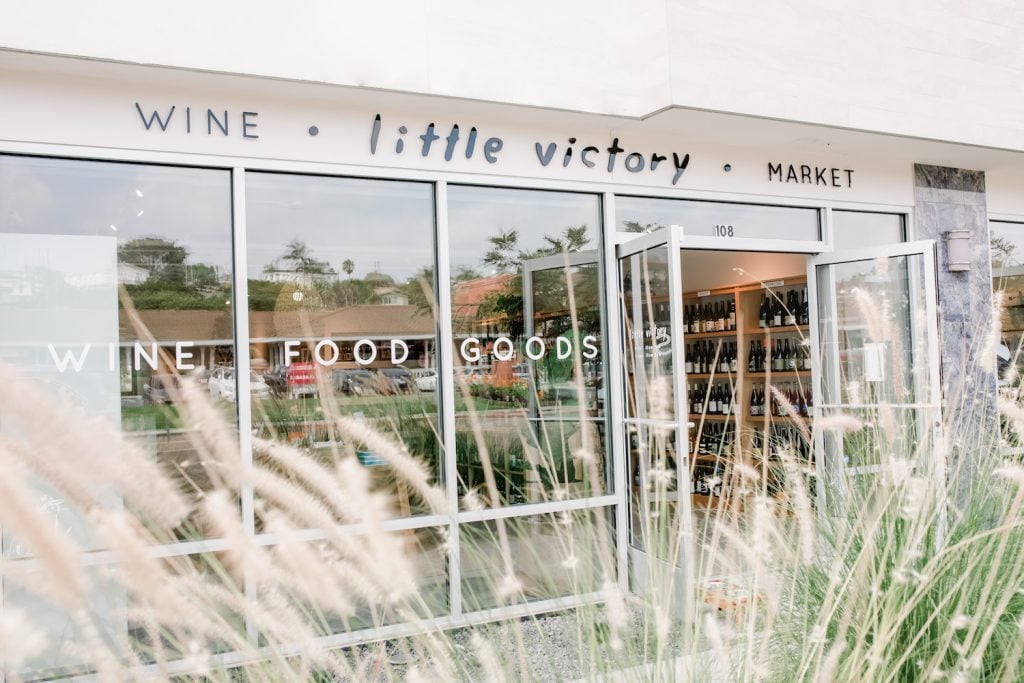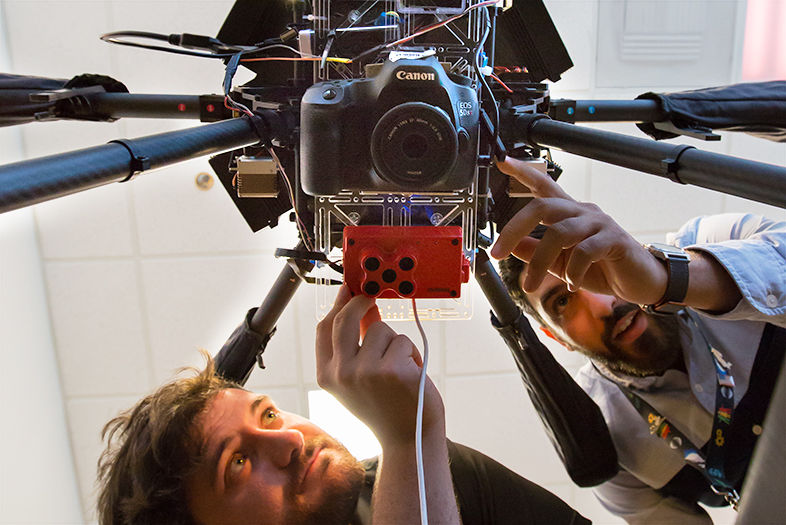Inside an unremarkable office park in Rancho Bernardo, Chris Duffey, a middle-aged electrical engineer, powers up a gadget about the size of a coffee maker. With parts made from PVC pipe, copper wire, and aluminum foil, the contraption looks like a movie prop, something Marty McFly might stumble upon in Doc Brown’s lab.
Duffey cranks up the power source—wired to a knob housed in an Altoids tin—and the machine sputters to life with a staccato buzz. Just then, violet arcs of electricity emanate from an aluminum-foil-covered ring topping the device. He presents a normal fluorescent light bulb in his hand, and as he brings it within a foot or so of the gadget, the bulb illuminates. That’s the function of this homemade Tesla coil—it’s a rudimentary wireless power source.
“It’s been a while since I was able to build anything,” says Duffey, whose electric grin says he enjoys this more than his paperwork-heavy day job as an engineering director in Northrop Grumman’s autonomous systems division. “This was a way for me to connect with my roots and remember what I really liked about engineering.”
Invented in the 1890s by futurist Nikola Tesla, the coil isn’t the most advanced thing ever created by Northrop Grumman, the aerospace defense contractor that brought us the B-2 bomber. In fact, Tesla coils are often placed in science museums for the sole purpose of nerding out and having fun. That’s precisely why this one is here, too, on Northrop’s North County campus better known for designing the RQ-4 Global Hawk drones used by the US military. Geeking out and having fun is a core principle of the lab where he created this little science project.
Welcome to the FabLab—short for Fabrication Lab—consisting of two floors of office space unceremoniously set next to Northrop’s shipping and receiving warehouse. Its 1,200 square feet are packed with 3-D printers, a virtual reality headset, soldering tools, electrical doodads, plentiful spare capacitors and circuit boards, and one sewing machine.
The equipment isn’t here to contribute to the design of weapons systems or other tools of aerospace and defense. Not exactly, anyway. It is here—available 24/7 to any company employee, no matter their job title or seniority level—for the sheer heck of it. The lab’s a playroom for the kid within these grown-up engineers.
Employees can futz around with the gear on their own time. They can 3-D print Christmas tree ornaments or iPhone cases, tinker with equipment that’s beyond their job description, chip away at engineering problems free from stress, engineer the next big idea from spare parts. At times, one employee or another will leave vexing questions written on a communal whiteboard for whoever may dream up an answer.
“We are trying to drive innovation not just into the business but into the thinking of our engineers,” says Lauren Paunescu, FabLab manager. Her job means making sure employees have access to the kinds of equipment that can switch on the light bulbs in their heads. “We’re giving them the opportunity to be creative in new and different ways.”
Launched two years ago, this lab is one of five across the company’s US campuses; another in Redondo Beach, started in 2014, was the first. (In 2016, Northrop engineers at the Redondo Beach lab developed a device to enable a painter with muscular dystrophy to reach his canvas easily.) The FabLab concept was created, in the words of a Northrop spokesman, “by employees, for employees, to help enable rapid prototyping and product development.”
And who knows what might come of it. There’s a reason why Google has its famous “20-percent time” policy encouraging employees to work on any project they desire, which, for one, spawned Gmail. And why Lockheed Martin created its bureaucracy-free Skunk Works incubator, birthplace of many fighter jets.
After he first built the Tesla coil a while back, Duffey held his iPhone close to its electromagnetic field. “It went crazy,” he says. It was a lesson that anyone in Northrop’s ranks can use. “If you’re going to build autonomous aircraft, they have to be protected against strong electromagnetic fields.“ However antiquated, the Tesla coil demonstrates some of the demands of systems engineering—the kind of complex interplay of technologies required for Northrop’s official projects. “There’s a lot of overlap with your real job.”
Construction of the coil took him about two weeks, much of it done at home during nights and weekends. The lab came in very handy, though, when he required an oscilloscope, a pricey piece of equipment, to measure voltage. “I really needed that to make sure it didn’t go up in smoke.”

Northrop Grumman’s Playground for Engineers
RQ-4 Global Hawk
The entire rig was built with about $50 in parts. Some could have been made on the five 3-D printers filling two tables in the lab’s bottom floor, though Duffey doesn’t know how to use them yet. If he wanted to learn, like hundreds of colleagues before him, he could sign up for one of the classes—they cover 3-D printing, soldering, math, sewing, Arduino microcontrollers, drone building, and anything else that employees request. There are even hackathons.
In one of them, employees from across the company competed to design an air-powered paper rocket launcher that’s now used in an employee orientation where groups build and test their own rockets. Another hackathon coordinated among all five FabLabs sought to design radios that cost less than a quarter, which could notify people of vaccine availability in remote areas of Congo.
Duffey slowly moves the light bulb away from the Tesla coil. As it gets about an arm’s length away, the bulb flickers, then finally winks out—a practical shortcoming that recalls why Tesla’s invention lost out to those of his contemporary, Thomas Edison, in the early days of electrical engineering. Maybe Tesla could’ve used an after-hours brainstorming session in the FabLab to try out a few other ideas.
When the ideas do come, the FabLab transforms into an incubator and accelerator. Two years ago, Charlie Welch, a Northrop engineer based in Redondo Beach and known for his work on unmanned aerial vehicles, wanted to fuse his expertise with a passion for wildlife conservation. He teamed up with likeminded Northrop engineers in San Diego, as well as scientists from San Diego Zoo Global. “We reached out to them and said we’d like to offer engineering to solve problems you have in conservation,” Welch says. He told them: “Feed us challenges.”
The scientists clued the engineers into the need to understand how sea ice in the Canadian arctic affects polar bear populations, and the urgency of gathering data finer than what satellites can record. “Growing up as a science geek and outdoorsy person, I could never get away from the beauty of the earth,” Welch says. “I wanted to find a way to bridge that passion with our expertise in aerospace and technology.”
Welch envisioned sending a drone to survey vast areas of sea ice, a task that cannot be performed by helicopter because the noise of the rotors disturbs the bears. Because the project wasn’t strictly a Northrop endeavor, the team worked out of the San Diego FabLab, retrofitting a stock six-rotor drone, the kind you might see hovering above the surf on a clear day at La Jolla Shores.
To its underside, they mounted a payload of four integrated sensors, including high-resolution and multispectral cameras, a laser altimeter, and an ice-penetrating radar capable of making measurements down to the centimeter. They also encased the vehicle in a ruggedized exterior to insulate it from the battery-zapping cold of the Far North.
“Getting the cameras to talk to each other was a big engineering challenge,” Welch says. “The current state of art is operating one high-res sensor at a time; some companies are barely breaking into operating two at a time.”
The engineers named their prototype Ron, after Will Ferrell’s Anchorman character, Ron Burgundy, and launched test flights at Black Mountain Open Space Park. To the amateur drone pilots they flew alongside, the Northrop Grumman engineers probably looked like just another bunch of enthusiastic hobbyists.
Last November, after testing, Welch and his team traveled to the shores of Hudson Bay, outside of Churchill, Manitoba. They launched Ron on 11 successful missions in what they called Operation #PolarEye. As Ron buzzed above the ice, the engineers beamed its video to a nearby research station, where it was analyzed by image recognition software they’d programmed to detect polar bears against the white background of the arctic landscape (apparently no easy task for current artificial intelligence).
After the research trip, the engineers donated Ron to the zoo, whose scientists are analyzing its data and coming up with ideas for its next missions. This humble project, launched in Northrop Grumman’s San Diego FabLab on a whim, has become the newest and most promising tool for understanding the plight of polar bears. With slight additions, like software that could recognize other species in their natural habitat, be it desert, tundra, or savanna, this model of drone-enabled surveys could be a new frontier in animal conservation. “The zoo’s looking to use it in a whole range of studies moving forward,” Welch says.

Northrop Grumman’s Playground for Engineers















